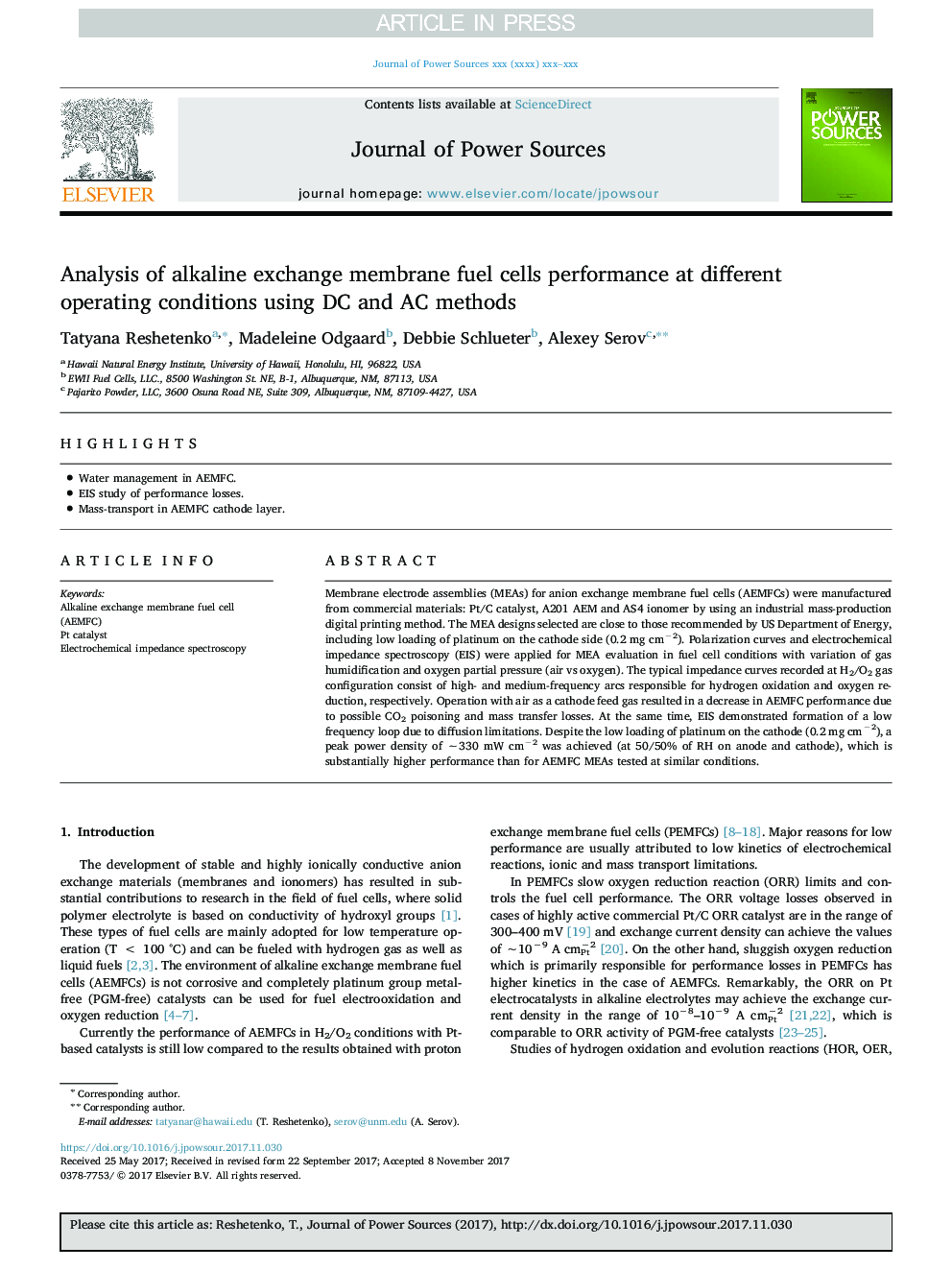| Article ID | Journal | Published Year | Pages | File Type |
|---|---|---|---|---|
| 7726058 | Journal of Power Sources | 2018 | 6 Pages |
Abstract
Membrane electrode assemblies (MEAs) for anion exchange membrane fuel cells (AEMFCs) were manufactured from commercial materials: Pt/C catalyst, A201 AEM and AS4 ionomer by using an industrial mass-production digital printing method. The MEA designs selected are close to those recommended by US Department of Energy, including low loading of platinum on the cathode side (0.2 mg cmâ2). Polarization curves and electrochemical impedance spectroscopy (EIS) were applied for MEA evaluation in fuel cell conditions with variation of gas humidification and oxygen partial pressure (air vs oxygen). The typical impedance curves recorded at H2/O2 gas configuration consist of high- and medium-frequency arcs responsible for hydrogen oxidation and oxygen reduction, respectively. Operation with air as a cathode feed gas resulted in a decrease in AEMFC performance due to possible CO2 poisoning and mass transfer losses. At the same time, EIS demonstrated formation of a low frequency loop due to diffusion limitations. Despite the low loading of platinum on the cathode (0.2 mg cmâ2), a peak power density of â¼330 mW cmâ2 was achieved (at 50/50% of RH on anode and cathode), which is substantially higher performance than for AEMFC MEAs tested at similar conditions.
Related Topics
Physical Sciences and Engineering
Chemistry
Electrochemistry
Authors
Tatyana Reshetenko, Madeleine Odgaard, Debbie Schlueter, Alexey Serov,
